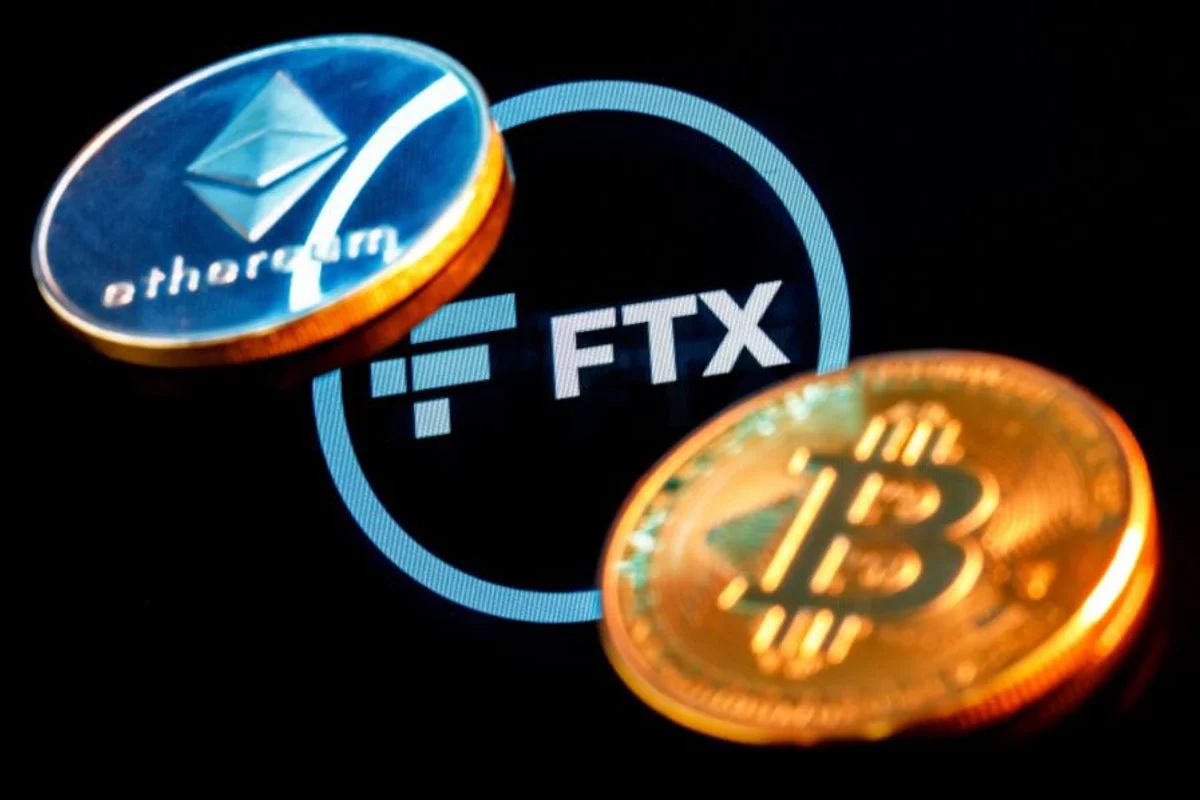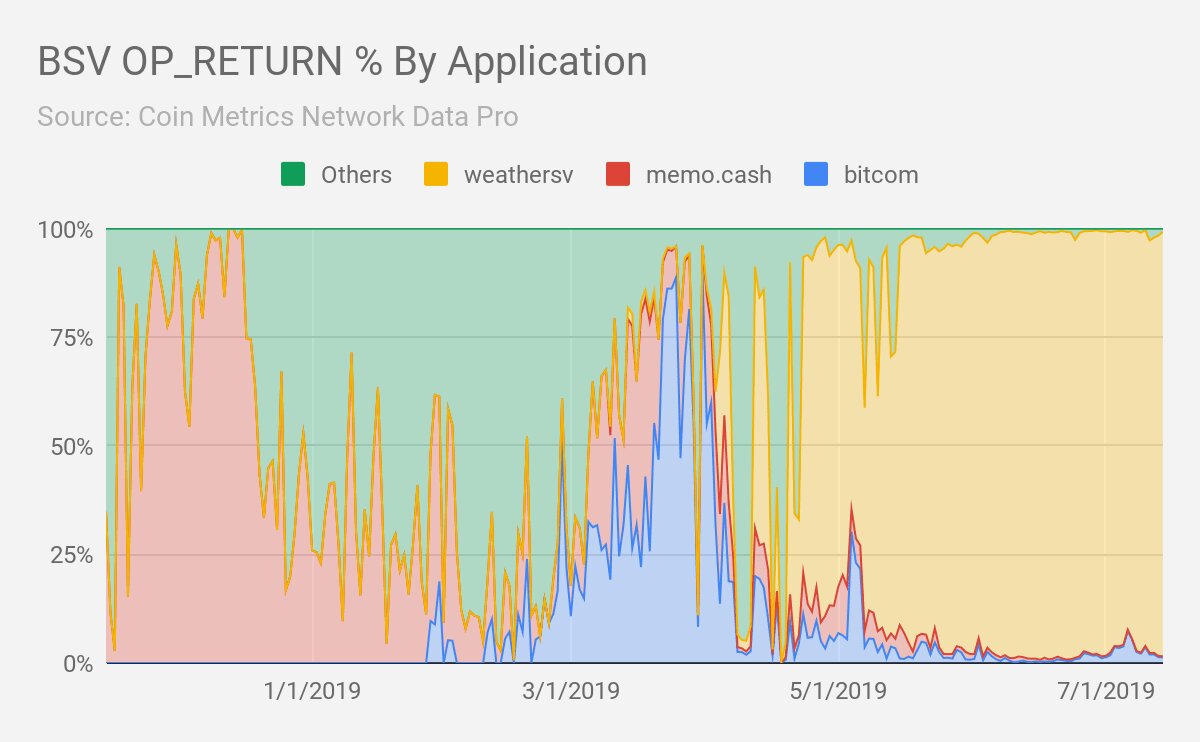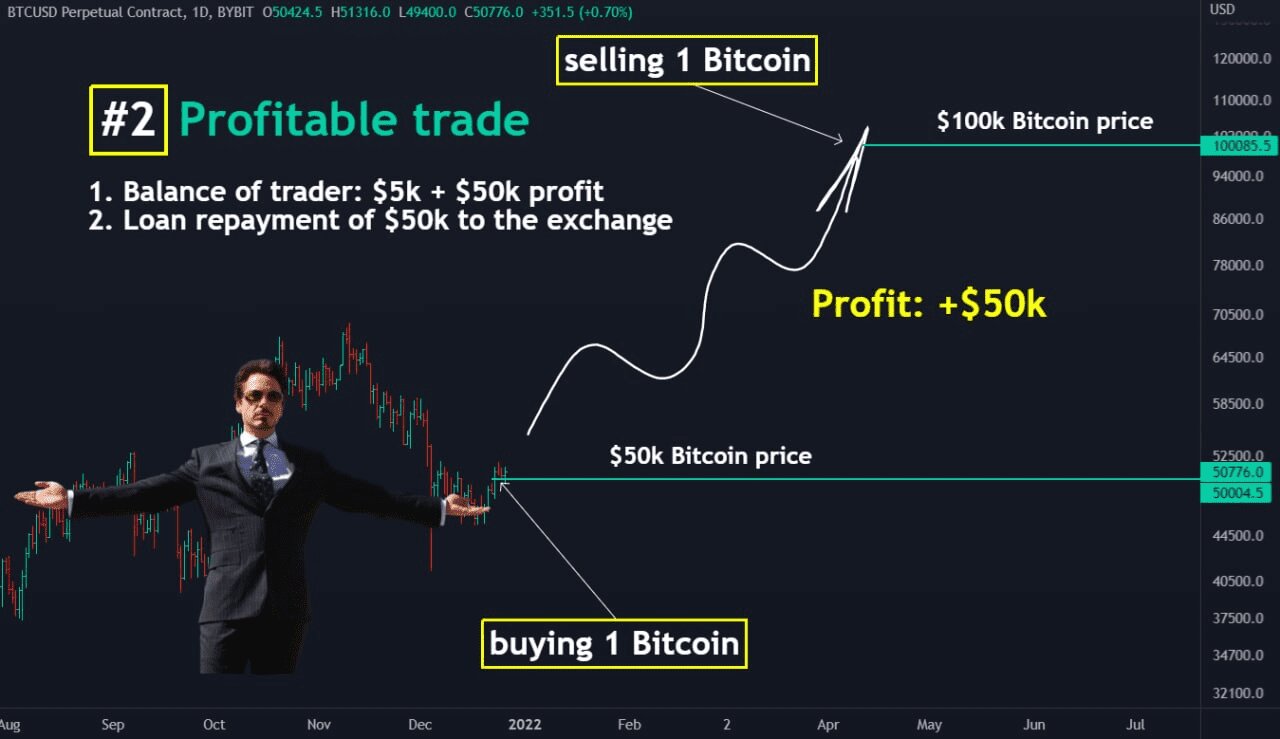Introduction
Welcome to the world of cryptocurrency, where fortunes are made and lost in a blink of an eye. In recent times, the crypto market has experienced a significant crash, leaving many investors perplexed and concerned. The sudden drop in prices of various digital assets has led to widespread panic and uncertainty.
The volatile nature of cryptocurrencies has always been both a blessing and a curse. While it offers immense opportunities for profit, it also presents the risk of substantial losses. This recent crash has left many wondering what factors contributed to this downturn and what it means for the future of digital currencies.
Understanding the reasons behind this crash requires a closer examination of a variety of factors, including market frenzy, regulatory uncertainty, China’s crackdown, Elon Musk’s tweets, environmental concerns, leveraged trading, fear of an interest rate hike, market manipulation, increased competition, and market saturation.
So, fasten your seatbelts as we dive deep into the world of cryptocurrency to uncover the reasons behind this recent crash and shed light on the future of digital assets.
Market Frenzy and Speculation
The crypto market has always been susceptible to wild price swings, driven largely by speculation and investor sentiment. In the months leading up to the crash, we witnessed a remarkable surge in interest and investment in cryptocurrencies. This increased demand created a market frenzy, with many investors jumping on the bandwagon without fully understanding the risks involved.
Speculation played a significant role in the market crash. As prices soared to record highs, fueled by media hype and the fear of missing out (FOMO), many investors flocked to cryptocurrencies hoping to make quick profits. This speculative buying spree resulted in an inflated market bubble that eventually burst, causing prices to plummet.
Moreover, the lack of regulations and oversight in the crypto market amplifies the effects of speculation. With minimal barriers to entry, anyone can invest in cryptocurrencies, including inexperienced individuals and opportunistic traders looking to make a quick buck. This speculative activity can lead to erratic price movements, making the market highly volatile and prone to crashes.
Furthermore, the availability of leverage trading platforms allows investors to amplify their positions, potentially magnifying both gains and losses. When market sentiment turns negative, leveraged traders are forced to sell their positions to cover their losses, accelerating the downward spiral of prices.
It is crucial for investors to exercise caution and conduct thorough research before entering the crypto market. While speculation can offer lucrative opportunities, it also carries significant risks. It is important to approach cryptocurrency investing with a long-term mindset, focusing on the fundamental value of projects rather than short-term price fluctuations.
As we delve deeper into the factors contributing to the recent crypto crash, it becomes clear that market frenzy and speculation played a substantial role. However, there are other crucial elements at play, such as regulatory uncertainty and China’s crackdown, which we will explore in the following sections.
Regulatory Uncertainty
One of the major factors that contributed to the recent crypto crash is regulatory uncertainty. Cryptocurrencies operate in a largely unregulated space, and governments around the world have been grappling with how to approach and regulate this emerging asset class.
The lack of clear regulations and guidelines creates an environment of uncertainty and fear among investors. Without a proper regulatory framework in place, market participants are left to navigate through a complex and ever-changing landscape. This uncertainty makes it difficult for institutional investors and traditional financial institutions to fully embrace cryptocurrencies.
Moreover, regulators have expressed concerns over the potential risks associated with cryptocurrencies, such as money laundering, terrorist financing, and consumer protection. These concerns have prompted regulators to consider implementing stricter regulations, which can have a significant impact on the crypto market.
Recent regulatory actions and statements from various government bodies have added to the uncertainty surrounding cryptocurrencies. For example, the Securities and Exchange Commission (SEC) in the United States has been cracking down on initial coin offerings (ICOs) that are deemed to be securities offerings. Additionally, regulatory bodies in different countries have started imposing stricter requirements on cryptocurrency exchanges, imposing KYC (Know Your Customer) and AML (Anti-Money Laundering) regulations.
Uncertainty regarding taxes on cryptocurrencies is another regulatory issue that has weighed on the market. Different jurisdictions have different tax laws and guidelines for cryptocurrencies, creating confusion for investors. The fear of facing heavy tax liabilities or potential legal repercussions has motivated some investors to exit the market.
Overall, the lack of clarity and consistency in regulations and the increasing scrutiny from regulatory bodies have contributed to the recent crypto crash. Investors are wary of the potential regulatory risks and uncertainty, leading to increased selling pressure and a downturn in prices.
In the next section, we will explore the impact of China’s crackdown on the crypto market and its role in the recent crash.
China’s Crackdown
China has long been a significant player in the world of cryptocurrencies, with a considerable share of mining activity and a large base of crypto investors. However, in recent months, the Chinese government has taken aggressive measures to crack down on the crypto industry, which has had a profound impact on the market.
One of the most notable actions taken by China is the restriction on cryptocurrency mining operations. The government has imposed stricter regulations on mining activities, leading to the shutdown of numerous mining farms. This crackdown has caused a significant drop in the hash rate of popular cryptocurrencies like Bitcoin, Ethereum, and others that heavily rely on Chinese mining operations. The decrease in mining power has raised concerns about the security and stability of these cryptocurrencies.
Furthermore, Chinese authorities have intensified their efforts to ban cryptocurrency trading and exchanges. They have issued warnings to financial institutions to refrain from engaging in crypto-related activities and subjected cryptocurrency exchanges to closer scrutiny. Additionally, popular social media platforms in China have been instructed to ban cryptocurrency-related advertisements and discussions, effectively limiting the reach and visibility of crypto projects.
China’s crackdown on cryptocurrencies has sent shockwaves throughout the market, as the country’s actions have a significant impact on global sentiment and trading volumes. The uncertainty surrounding the future of cryptocurrencies in China has led to a significant sell-off, with investors liquidating their positions to mitigate potential risks.
It is important to note that China’s crackdown is not a new phenomenon. The country has a history of taking strict measures against cryptocurrencies to maintain financial stability and control over its economy. However, the recent intensification of these actions has had a more substantial impact on the market, given China’s significant influence in the crypto space.
As we continue our exploration of the factors contributing to the recent crypto crash, we will now shift our focus to the role of Elon Musk’s tweets and their effects on the market.
Elon Musk’s Tweets
Elon Musk, the CEO of Tesla and SpaceX, has undeniably become one of the most influential figures in the world of cryptocurrencies. His tweets have the power to move markets and have played a significant role in the recent crypto crash.
Musk’s tweets about cryptocurrencies, particularly Bitcoin and Dogecoin, have sparked both excitement and volatility in the market. When Musk initially expressed support for Bitcoin, Tesla even announced its purchase of $1.5 billion worth of Bitcoin. This move was seen as a significant validation of cryptocurrencies and led to a surge in prices.
However, Musk’s influence on the market was not limited to positive sentiment. His tweets often carried mixed messages, ranging from expressing support to expressing concerns. On multiple occasions, Musk tweeted about environmental concerns related to Bitcoin mining, highlighting its energy-intensive nature. Following his tweets, the market witnessed a swift drop in Bitcoin’s price, as investors reacted to the uncertainty introduced by Musk’s statements.
In addition to Bitcoin, Musk’s tweets also had an impact on Dogecoin, a meme-based cryptocurrency that gained a substantial following based on his endorsements. Musk’s tweets about Dogecoin have led to massive price movements, with significant gains and subsequent losses, depending on his statements and actions.
It is important to note that while Musk’s tweets have undeniable influence, they have also raised concerns about market manipulation. Critics argue that his statements can cause immense volatility and have an unfair impact on market movements. The market’s reliance on the tweets of a single individual highlights the need for caution and critical thinking in the face of social media influence.
As we dive deeper into the factors contributing to the recent crypto crash, it becomes evident that Elon Musk’s tweets have had a substantial impact. However, there are other critical elements at play, including environmental concerns, leveraged trading, and fear of an interest rate hike, which we will explore in the following sections.
Environmental Concerns
Environmental concerns have emerged as a significant factor contributing to the recent crypto crash. The energy-intensive nature of cryptocurrencies, particularly Bitcoin, has raised alarm bells among investors and environmental activists alike.
Bitcoin mining, the process by which new coins are created and transactions are verified, requires a massive amount of computational power. This computational power is provided by specialized devices known as mining rigs, which consume an enormous amount of electricity. As a result, Bitcoin mining has a significant carbon footprint, as the majority of mining operations rely on fossil fuel-based energy sources.
The environmental impact of cryptocurrencies came into the spotlight when Elon Musk expressed concerns about Bitcoin’s energy consumption in his tweets. Musk cited the increasing use of coal and other non-renewable energy sources to power Bitcoin mining as a reason for Tesla’s decision to suspend Bitcoin payments for its products.
Following Musk’s statements, the market witnessed a sharp decline in Bitcoin’s price as investors reacted to the potential risks associated with environmental concerns. This case highlighted the increasing awareness and scrutiny surrounding the sustainability of cryptocurrencies. Investors, institutions, and governments are now more mindful of the environmental implications and are calling for greener alternatives.
Efforts are underway to address these concerns and promote more eco-friendly blockchain technologies. Some cryptocurrencies, like Ethereum, are transitioning from the energy-intensive Proof of Work (PoW) consensus mechanism to a more energy-efficient Proof of Stake (PoS) system. PoS requires significantly less computational power and energy consumption, making it a more sustainable alternative.
Furthermore, there is a growing interest in renewable energy-powered mining operations. Initiatives are being developed to harness the excess energy generated by renewable sources, such as solar and wind power, for cryptocurrency mining. These initiatives aim to reduce the carbon footprint of cryptocurrencies and make them more environmentally friendly.
The environmental concerns surrounding cryptocurrencies have undoubtedly played a role in the recent market crash. Investors are becoming increasingly conscious of the sustainability and long-term viability of digital assets. As the industry evolves, addressing these environmental concerns will be a crucial factor in maintaining investor confidence and sustainable growth.
As we continue our exploration of the factors contributing to the recent crypto crash, we will now shift our focus to the impact of leveraged trading and liquidations.
Leveraged Trading and Liquidations
Leveraged trading, also known as margin trading, has become increasingly popular in the world of cryptocurrencies. It allows investors to trade with borrowed funds, amplifying both potential gains and losses. While leveraged trading can offer substantial profits, it also poses significant risks, and its impact on the recent crypto crash should not be overlooked.
During periods of market volatility, leveraged traders are particularly vulnerable to liquidations. When the value of their positions declines to a certain threshold, known as the liquidation price, their positions are automatically closed by the exchange. This process is designed to protect both the trader and the exchange from excessive losses.
The recent crypto crash witnessed a cascade of liquidations as prices plummeted. The rapid decline in prices triggered a wave of margin calls, forcing leveraged traders to sell their positions to cover their mounting losses. This increased selling pressure further fueled the downward spiral of prices, intensifying the market crash.
In a highly leveraged market, even a minor drop in prices can trigger a domino effect of liquidations. Leveraged traders rushing to sell their positions to mitigate losses can create a self-reinforcing cycle of panic selling, driving prices down further. As prices continue to decline, more liquidations are triggered, exacerbating the market downturn.
Moreover, the prevalence of leveraged trading can artificially inflate market volumes and create an illusion of liquidity. When leveraged positions are liquidated, it can lead to a significant decrease in trading volume, further destabilizing the market and magnifying the impact of sell-offs.
It is important to note that leveraged trading is a double-edged sword. While it can potentially amplify gains for traders during bullish periods, it can also result in substantial losses during market downturns. Traders should exercise caution and properly manage their risk when engaging in leveraged trading to avoid being caught in the whirlwind of liquidations.
As we continue our exploration of the factors contributing to the recent crypto crash, we will now shift our focus to the fear of an interest rate hike and its impact on the market.
Fear of an Interest Rate Hike
The fear of an interest rate hike has recently emerged as a significant factor contributing to the crypto crash. Central banks play a crucial role in setting interest rates, which can have a profound impact on the broader financial markets, including cryptocurrencies.
Low interest rates have been a driving force behind the massive influx of capital into the crypto market. With traditional investments offering low returns, investors have sought higher yields in alternative assets such as cryptocurrencies. However, as the global economy shows signs of recovery from the COVID-19 pandemic, central banks may consider raising interest rates to combat inflationary pressures.
The fear of an interest rate hike has created uncertainty in the market and prompted investors to reevaluate their strategies. Cryptocurrencies, often seen as high-risk assets, are particularly sensitive to changes in interest rates. If interest rates rise, the appeal of riskier investments like cryptocurrencies may decrease, as investors may reallocate their funds to lower-risk, higher-yielding assets.
Moreover, higher interest rates typically lead to increased borrowing costs, affecting leveraged traders and businesses that rely on debt financing. If the cost of borrowing rises, it can dampen investment and economic activity, potentially impacting the demand for cryptocurrencies.
The anticipation of an interest rate hike can prompt investors to take a more cautious approach and adopt a wait-and-see stance. This market sentiment can result in increased selling pressure and a decline in cryptocurrency prices. The fear of an interest rate hike adds to the overall uncertainty in the market, exacerbating the impact of other contributing factors.
It is important to note that the timing and magnitude of interest rate hikes are uncertain, and their impact on the crypto market may differ based on various factors, such as the overall economic conditions, global monetary policies, and investor sentiment.
As we continue our analysis of the factors contributing to the recent crypto crash, we will now delve into the role of market manipulation and whales in the destabilization of the market.
Market Manipulation and Whales
Market manipulation and the influence of whales have long been concerns in the cryptocurrency space. These factors have also played a role in the recent crypto crash, contributing to market instability and volatility.
Whales, individuals or entities with substantial cryptocurrency holdings, have the ability to exert significant influence over the market. Their large transactions can cause significant price movements, triggering a herd mentality among smaller investors and exacerbating volatility.
Whales can manipulate the market through various strategies, such as pump-and-dump schemes. In a pump-and-dump, whales artificially inflate the price of a cryptocurrency by accumulating a large number of coins and then initiating a coordinated buying campaign. Once the price has risen significantly, they sell their holdings, causing a rapid price decline and leaving smaller investors with significant losses.
Additionally, whales can engage in spoofing, a deceptive tactic in which they place large buy or sell orders to create the appearance of market demand or supply. These orders are often canceled before execution, but they can influence other traders’ decisions and create artificial price movements.
Moreover, the crypto market’s relatively low liquidity makes it more susceptible to manipulation. With lower trading volumes compared to traditional financial markets, even a relatively small amount of capital can have a significant impact on crypto prices.
Regulators have started to crack down on market manipulation, but it remains a persistent issue. The decentralized nature of cryptocurrencies and the lack of oversight make it challenging to detect and prevent manipulative practices effectively.
Market manipulation undermines investor confidence and creates an environment of uncertainty and distrust. It can lead to dramatic price fluctuations, induce panic selling, and contribute to market crashes.
However, it is essential to recognize that not all price movements are necessarily the result of manipulation. The crypto market is inherently volatile, and price fluctuations can be driven by a combination of factors, including market sentiment, economic news, and technological developments.
As we continue our examination of the factors contributing to the recent crypto crash, it is important to stay vigilant and aware of potential market manipulation while analyzing other dynamic factors, such as increased competition and market saturation, which we will explore in the following section.
Increased Competition and Market Saturation
The cryptocurrency market has experienced exponential growth in recent years, resulting in increased competition and market saturation. This intensified competition has contributed to the recent crypto crash, as new cryptocurrencies enter the market and vie for attention and investment.
The rise of initial coin offerings (ICOs) and token launches has allowed countless projects to enter the crypto space, offering innovative solutions and technological advancements. While this has fostered innovation, it has also led to a crowded market with numerous cryptocurrencies competing for limited investor funds.
With thousands of cryptocurrencies available, investors face the challenge of evaluating and choosing the most promising projects. This saturation can lead to a dilution of demand, causing prices to fluctuate or decline as attention shifts to new and more enticing projects.
Furthermore, the influx of new cryptocurrencies creates increased competition for resources, including mining power, trading volume, and market attention. As a result, projects may resort to aggressive marketing tactics, exaggerating their potential to attract investors and increase demand for their tokens. This aggressive marketing can create unrealistic expectations and volatility in the market.
Additionally, the increased competition has led to the development of alternative blockchain platforms that promise improved scalability, speed, and cost-effectiveness. For example, Ethereum faced challenges with scalability and high transaction fees, leading to the emergence of competing platforms like Binance Smart Chain, Solana, and Polkadot. This fragmentation further diversifies the market and introduces additional complexities and uncertainties.
Market saturation and increased competition also raise concerns about the quality and credibility of projects. Not all cryptocurrencies offer real-world utility or have a sustainable business model. In the absence of proper due diligence and regulation, investors may fall prey to scams or invest in projects with little substance, resulting in losses and a loss of trust in the market.
As the market becomes more saturated and competitive, it becomes essential for investors to conduct thorough research and scrutinize the fundamentals and value proposition of cryptocurrencies. Investing in projects with a solid foundation, active development teams, and meaningful partnerships can mitigate the risks associated with market saturation and increase the likelihood of long-term success.
As we near the end of our analysis, we have explored various factors contributing to the recent crypto crash, including market frenzy, regulatory uncertainty, China’s crackdown, Elon Musk’s tweets, environmental concerns, leveraged trading, fear of an interest rate hike, market manipulation, and increased competition. By understanding these factors, investors can better navigate the cryptocurrency market and make informed decisions about their investments.
Conclusion
In summary, the recent cryptocurrency crash can be attributed to a combination of factors that have created a perfect storm in the market. Market frenzy and speculation, regulatory uncertainty, China’s crackdown, Elon Musk’s tweets, environmental concerns, leveraged trading, fear of an interest rate hike, market manipulation, and increased competition have all played a role in destabilizing the crypto market and causing prices to plummet.
The crypto market is inherently volatile, and it is important for investors to understand the risks associated with investing in digital assets. Market sentiment, driven by factors both within and outside the crypto space, can lead to rapid price fluctuations and create a turbulent environment for traders and investors.
While the recent crash may have caused panic and losses for some, it is crucial to remember that the crypto market has shown resilience in the past. It has experienced significant booms and corrections throughout its history. This volatility, while presenting risks, also offers opportunities for those who understand the dynamics of the market and make informed investment decisions.
As the crypto market continues to evolve, it is expected that regulatory frameworks will become more established, professional investors will enter the space, and technological advancements will enhance the efficiency and scalability of cryptocurrencies. These developments may contribute to greater stability and maturity in the market over time.
It is important for investors to stay informed and adapt their strategies accordingly. Thorough research, risk management, and a long-term perspective are crucial in navigating the crypto market. Recognizing the impact of various factors such as market frenzy, regulatory changes, environmental concerns, and competition can help investors make more informed decisions and mitigate potential risks.
As with any investment, diversification is key. Allocating funds across a range of cryptocurrencies and traditional assets can help protect against volatility and minimize losses in the event of a market downturn.
While the recent crypto crash has raised concerns, it has also provided an opportunity for the crypto community to reflect and learn. By understanding the factors that contributed to the crash, the industry can work towards addressing challenges such as regulatory uncertainty, environmental impact, and market manipulation, ultimately paving the way for a more stable and sustainable future for cryptocurrencies.

























